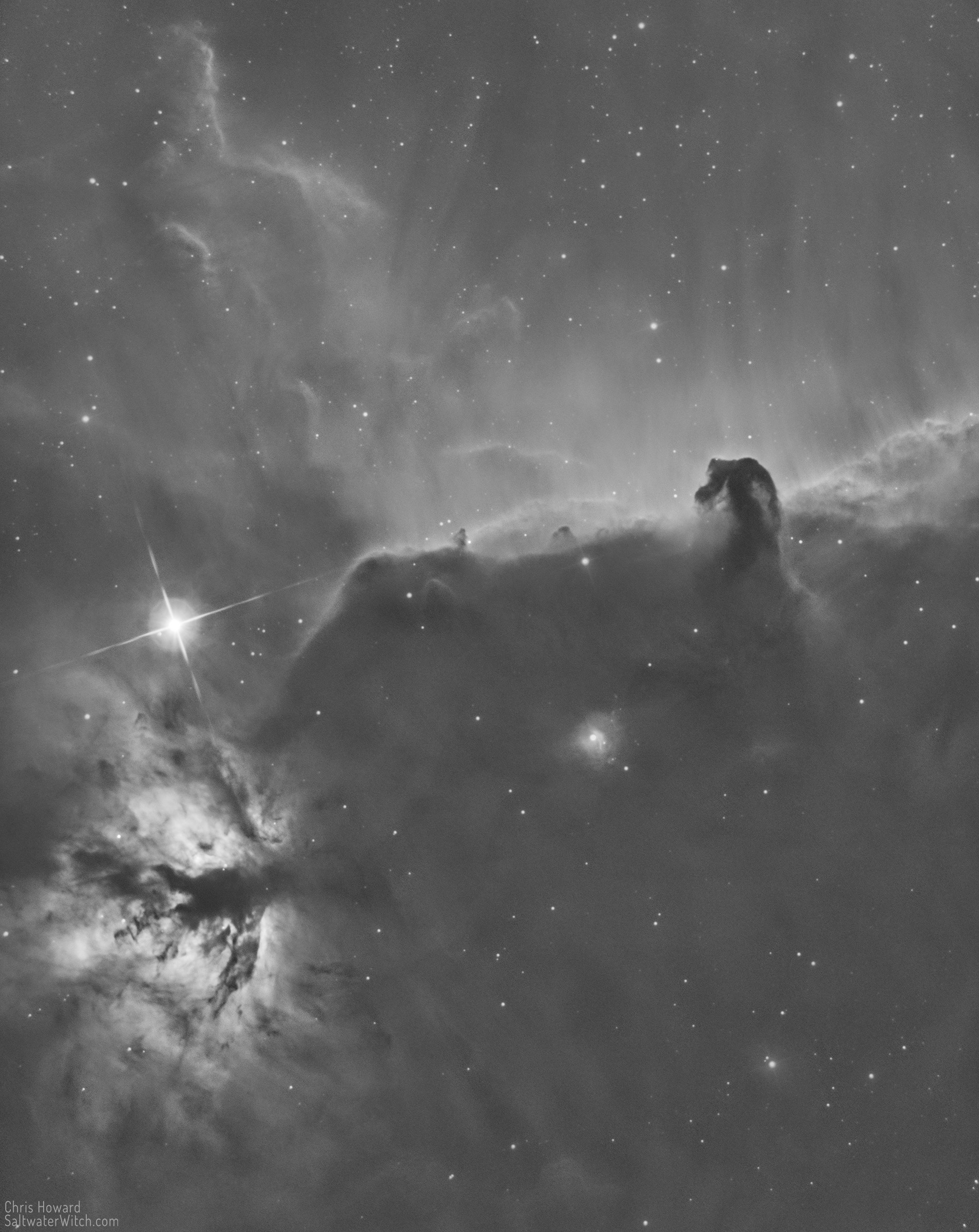Narrowband with the Newt
October 19, 2022
We finally had some clear-ish skies last night after several days of gloom and rain, and I got to test out the 800mm f/4 newtonian scope with the ZWO ASI1600MM-Pro monochrome camera and 3nm narrowband filters. I spent most of the night imaging NGC 6888, the Crescent Nebula in Ha and OIII, and around 2am moved to the other side of the sky (away from a ~30% waning moon) to capture the Horsehead Nebula (B33) and the Flame Nebula (NGC 2024, Sh2-277), along with the leftmost star in Orion's Belt, Alnitak (bright star with the diffraction spikes from the Newtonian's secondary mirror) Alnitak is actually a triple star system, with most of the light and energy coming from ζ Orionis (zeta Ori), a massive blue super-giant 20 times larger than our star and over 21,000 times brighter. Imaging notes: 20 x 300-second subs in Ha, stacked in DSS. Apertura 800mm f/4 Newtonian OTA, ZWO ASI1600MM-Pro mono camera, Antlia 3nm Ha filter, ZWO ASI290M OAG, on the Sky-Watcher EQ6R-Pro mount with the ZWO ASIAir Plus controller.

NGC 6888, the Crescent Nebula in Ha+OIII. The Crescent is an emission nebula 25 lightyears across, about 5000 lightyears away in the constellation Cygnus. This interesting set of structures with multiple shock waves, including an inner shell of hydrogen surrounded by an expanding envelope of oxygen (the semi-transparent bubbling blue structure) is the result of a collision of the fast-burning Wolf-Rayet star WR136 with a massive red-giant star. I usually shoot the Crescent in hydrogen-alpha only, and that will only pick up that inner crusty blob, but it's way creepier with the oxygen bandpass data and that weird semi-transparent blue sleeve, perfect for October. Imaging notes: 80 x 300-second subs in Ha and OIII, stacked in DSS. Apertura 800mm f/4 Newtonian OTA, ZWO ASI1600MM-Pro mono camera, Antlia 3nm Ha, OIII filters, ZWO ASI290M OAG, on the Sky-Watcher EQ6R-Pro mount with the ZWO ASIAir Plus controller.

